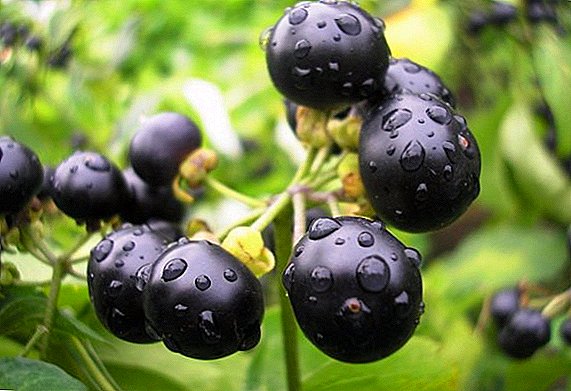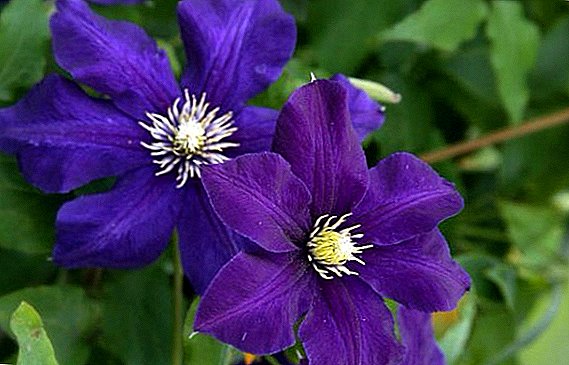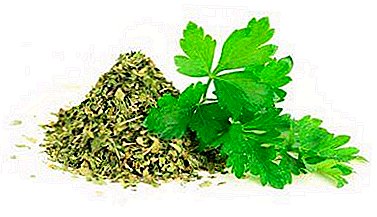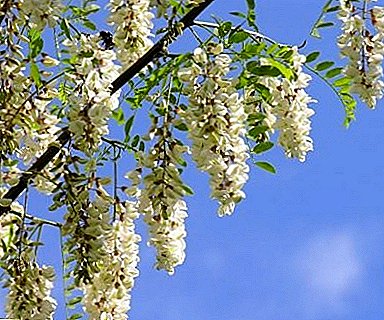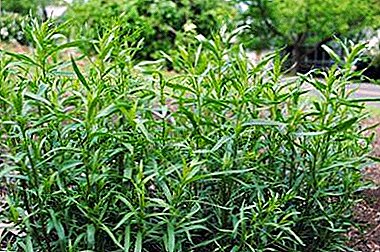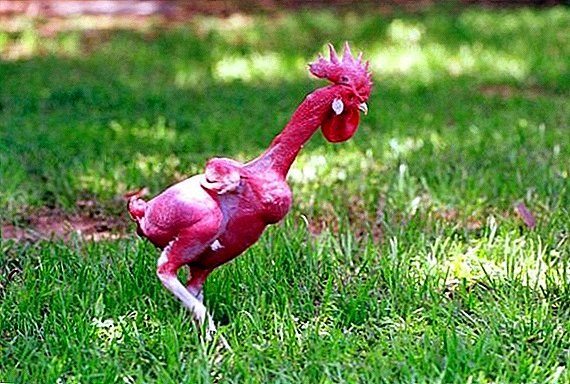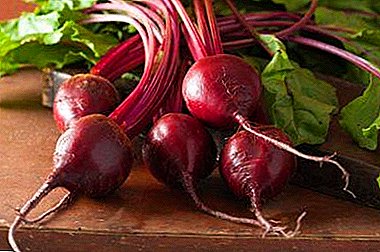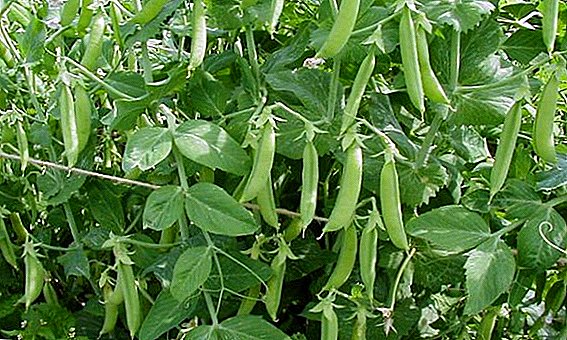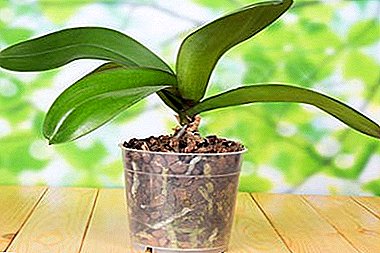
An exotic orchid has recently appeared on the shelves of garden centers and flower shops. And immediately became a popular and sought-after indoor flower. Extraordinary flowering and grace captivated many flower growers.
An important feature for the care of a plant is the properly selected planting material, its type, texture. On this depends the health and development of the orchid. In the article we will tell. which substrate is best for this flower, where you can buy it and whether you can make it yourself at home. You can also watch a useful video on this topic.
What it is?
The soil mix or substrate is a multicomponent compound.. Components of the mixture may be of organic and inorganic origin. The basis of inorganic materials are expanded clay, polystyrene fibers, broken bricks, mineral wool.
What is it used for?
Ready substrates differ in manufacturer, cost and purpose of use.. It is for the intended purpose soils are:
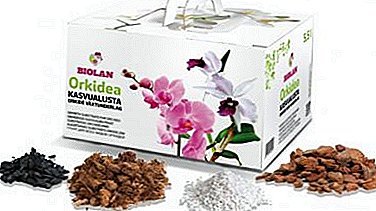 for growing seedlings of vegetable crops;
for growing seedlings of vegetable crops;- for winter storage and germination of tubers;
- for planting and transplanting indoor flowers;
- addition to planting fruit seedlings;
- rooting cuttings.
Packaged soil is used as a component to update the old soil in flowerpots, for top dressing and bedding. Or it may be a complete mix for planting.
Requirements
The substrate must meet the needs of orchids and comply with the microclimate of the room.. When dry air should take moisture-absorbing soil, and the state should be constantly monitored. If decomposition of the soil is noticed, then update immediately.
Basic requirements for the choice of substrate for an exotic flower:
- breathability, for the implementation of vital functions of the roots need oxygen;
- lightness, friability, heavy soil will put pressure on the root system, preventing them from fully developing;
- no toxicity, it is desirable to choose organic, environmentally friendly substances;
- optimal moisture capacity, the lower the percentage of humidity in the room with an orchid, the greater the moisture content should be;
- have a long process of decomposition of the components;
- sterility, the soil should be unfavorable for the residence of bacteria and pathogenic microorganisms;
- non-acidic pH 5.5-6.0.
Right and wrong composition
It is important to select the substrate, clearly focusing on the interests of indoor plants. Epiphytic varieties need a light, fast-drying soil, while land varieties prefer a denser, moisture-absorbing substrate. That makes all the difference.
The correct composition of the mixture for orchids:
- pine bark;
- ash;
- moss;
- coconut peel;
- compost;
- peat;
- perlite;
- humus;
- leafy ground.
The last five ingredients are used for ground varieties. The wrong composition is collected by eye, contains garden soil and is flavored with numerous supplements. Perhaps, after such an orchid is not reanimated.
Buy ready or cook yourself?
 At first glance, the easiest way to go to the garden store and buy ready-made soil for orchids. However, there are problems. There are many types of exotic plants, and the requirements of each differ significantly from others. If, upon purchase, you find that the substrate mainly consists of moss or worse than peat, then you should look for materials with which you can dilute the mixture.
At first glance, the easiest way to go to the garden store and buy ready-made soil for orchids. However, there are problems. There are many types of exotic plants, and the requirements of each differ significantly from others. If, upon purchase, you find that the substrate mainly consists of moss or worse than peat, then you should look for materials with which you can dilute the mixture.
In fact, quality soil for orchids is quite difficult to find. And if they did find it, then the cost will be rather big. The best option in this situation would be to: independently collect the ingredients and prepare the mixture. This will definitely save finances. Especially since there is nothing difficult in this, knowing the basic ingredients. You can find them in the forest. All go out of town for picnics or go to the forest for mushrooms. You can combine business with pleasure.
When independently preparing the substrate, there are also some nuances. If not everyone wants to do this, or there is simply no time, then there is a third alternative option - buy the necessary components of the substrate and mix in the right proportions. Good products are available from the manufacturer "Gardens Auriki". Components hermetically packed and completely disinfected.
It should be noted that the soil for planting orchids must have a pH.
Soil description
Of course, to get a quality, selected in the individual proportions of the substrate, cook yourself. Otherwise, pay attention to the following ready-mix:
- "Bio Start Effect" made in Russia. The mixture is made exclusively from natural, organic ingredients. The soil is fine-grained, the fraction size is 8-13 mm. The substrate does not need disinfection, it is completely ready for use. The cost of packing 2 liters is 350 rubles.
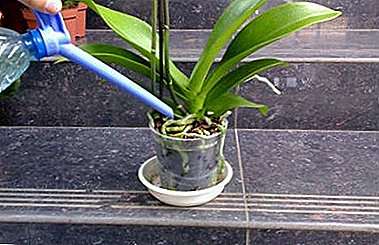 "Gardens Auriki" for orchid pros. The soil mixture consists of: wood ash, bark, moss, coconut chips. Also included is biohumus, which in this volume does not benefit the plant, and the bark has a negligible amount. The volume of the substrate is designed for a pot with a capacity of up to 1.7 liters. As a drainage can be applied coconut fiber, which is available in the kit. The cost of a set is 100 rubles.
"Gardens Auriki" for orchid pros. The soil mixture consists of: wood ash, bark, moss, coconut chips. Also included is biohumus, which in this volume does not benefit the plant, and the bark has a negligible amount. The volume of the substrate is designed for a pot with a capacity of up to 1.7 liters. As a drainage can be applied coconut fiber, which is available in the kit. The cost of a set is 100 rubles.- "Seramis" - planting mixture designed specifically for orchids. The composition contains large fractional granules of expanded clay, pine bark and additional micronutrients. The substrate provides the necessary air exchange, promote active growth, maintains water balance. Price 950 rubles. The soil content in the package 2.5 liters.
How to improve purchased?
To avoid this effect experienced growers are advised to sift the soil with a large sieve or colander with large holes. The main task is to remove excess peat. Then we bring the mixture to an ideal state, diluting it with pine bark, moss, and wood ash. And already in this form the substrate is ready for use.
How to use the substrate component?
As already noted, the soil for orchids should be composed according to the proportions for each class individually.
For epiphytic
This species includes the following varieties: dendrobium, zygopetalum, phalaenopsis, cambria, lykasta, masdevalli, cattley. For them, the nutritional quality of the soil can be attributed to the background. The main ingredient is pine bark, which gives the substrate lightness, friability, does not trap moisture..
 And the remaining components provide the soil with additional, but equally important properties.
And the remaining components provide the soil with additional, but equally important properties.
The substrate for epiphytes is prepared as follows:
- Pre-pick the pot and all the necessary components. Decontamination in advance, if necessary.
- In a plastic pot on one lay a drainage layer about 3 cm thick.
- We measure off the ingredients, respecting the proportions, and mix.
- The resulting mixture is poured into a pot.
For ground
Unlike epiphytes, preferring vegetation covers, ground representatives need slightly different soil.. For them, the humidity should be much higher, and the soil is denser.
Composition for terrestrial orchids:
- Combine one portion of tree bark, sphagnum moss, ash.
- Mix.
- After add ½ part packaged soil.
- Mix.
- Fill the pot, do not forget to pre-lay the drainage layer.
All components should be pre-washed, cleaned, disinfected, and the peat should be neutralized to the desired pH.
Implications of use and solutions
It happens that an exotic beauty stops its development, the leaves turn yellow to dry, and during flowering the flowers are not bright and small. These problems may be the result of an illiterate choice of a component or their incorrect proportion. If the moisture is not absorbed for a long time, the soil is wet for a long time. Orchids are so uncomfortable. Should add pine bark and ash. And when the reverse situation, when the water does not stay in the pot, add moss and fern roots.
Also, the cause may be old age. Over time, the soil decomposes, becomes depleted, there are no nutrients. Therefore, every three years the substrate should be updated.
Conclusion
Orchid - capricious exotic flower, which often dies. And this is not always due to the inexperience of the owner. When purchasing ready-made mixture for orchids, we are confident in its quality and perfect compatibility with the plant. But it turns out wrong. The most suitable and proven substrate - it is prepared with his own hands.


 for growing seedlings of vegetable crops;
for growing seedlings of vegetable crops; "Gardens Auriki" for orchid pros. The soil mixture consists of: wood ash, bark, moss, coconut chips. Also included is biohumus, which in this volume does not benefit the plant, and the bark has a negligible amount. The volume of the substrate is designed for a pot with a capacity of up to 1.7 liters. As a drainage can be applied coconut fiber, which is available in the kit. The cost of a set is 100 rubles.
"Gardens Auriki" for orchid pros. The soil mixture consists of: wood ash, bark, moss, coconut chips. Also included is biohumus, which in this volume does not benefit the plant, and the bark has a negligible amount. The volume of the substrate is designed for a pot with a capacity of up to 1.7 liters. As a drainage can be applied coconut fiber, which is available in the kit. The cost of a set is 100 rubles.